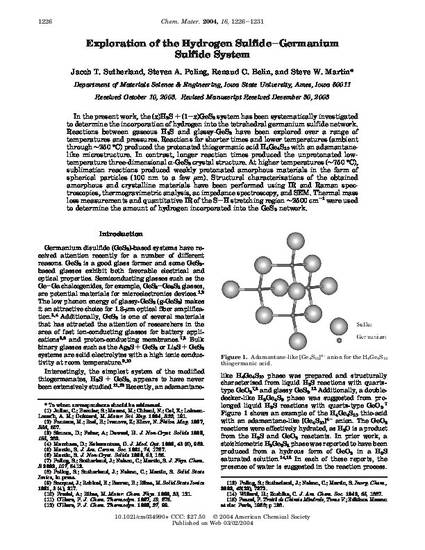
In the present work, the (x)H2S + (1−x)GeS2 system has been systematically investigated to determine the incorporation of hydrogen into the tetrahedral germanium sulfide network. Reactions between gaseous H2S and glassy-GeS2 have been explored over a range of temperatures and pressures. Reactions for shorter times and lower temperatures (ambient through 250 °C) produced the protonated thiogermanic acid H4Ge4S10 with an adamantane-like microstructure. In contrast, longer reaction times produced the unprotonated low-temperature three-dimensional α-GeS2 crystal structure. At higher temperatures (750 °C), sublimation reactions produced weakly protonated amorphous materials in the form of spherical particles (100 nm to a few μm). Structural characterizations of the obtained amorphous and crystalline materials have been performed using IR and Raman spectroscopies, thermogravimetric analysis, ac impedance spectroscopy, and SEM. Thermal mass loss measurements and quantitative IR of the S−H stretching region 2500 cm-1 were used to determine the amount of hydrogen incorporated into the GeS2 network.
Available at: http://works.bepress.com/steve_martin/35/

Reprinted with permission from Chemistry of Materials 16 (2004): 1226–1231, doi:10.1021/cm034990+. Copyright 2004 American Chemical Society.